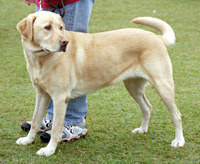Dogs, Infants and Imitation

Human beings have a remarkable ability to be able to understand the goals and intentions of others. This ability develops gradually during infancy and early childhood and is known as the theory of mind. This ability seems often to go wrong in people with autism spectrum disorders and schizophrenia. Psychologists have tended to think that this is a purely human ability, yet every one who spends a lot of time with animals is sure that they have a similar ability.
New research from the University of Vienna and the University of Budapest, have found striking similarities between humans and dogs in the way they imitate the actions of others.
The researchers were examining a phenomenon known as “selective imitation.” Dogs were given the task of opening a food container by pulling a rod. Normally dogs prefer to use their mouths for this kind of task, but a female dog was trained to open the box with her paw. When the other dogs watched how she did it, they imitated her to get the food. But the dogs only imitated selectively.
When the “training dog” used her paw while holding a ball in her mouth, they used their mouths instead of their paws for manipulating the rod. But when the demonstrating dog’s mouth was free, the dogs once again imitated her and used their paws. This implies that they assumed that she was only using her paw because her mouth was otherwise occupied.
It also indicates that dogs are like human infants in that they do not simply copy an action that they observe, but they adjust the extent to which they imitate depending on the situation. Neither dogs nor humans blindly copy what another creature is doing: they copy what is appropriate for the task at hand. The research has just appeared online in the journal Current Biology.
After their millennia of association with humans, dogs may be a special case. But I doubt it: this is yet more evidence that the gap between animals and humans is shrinking much more rapidly than many of us realize.






